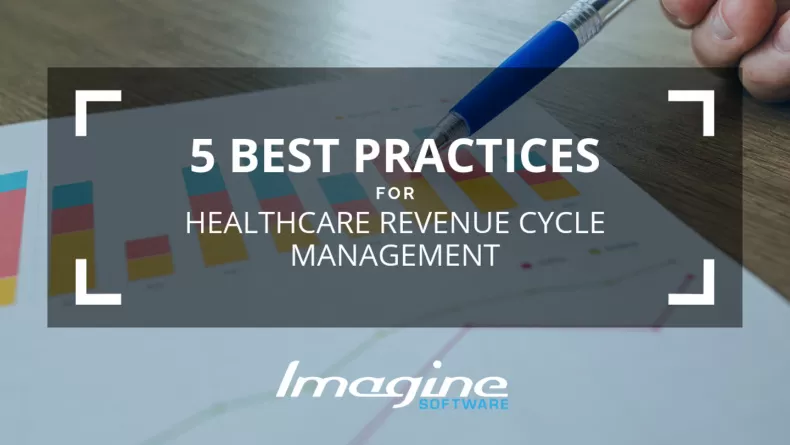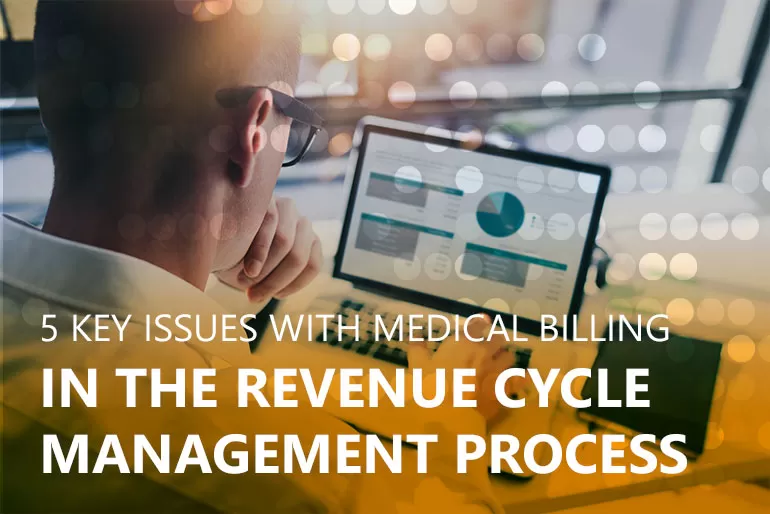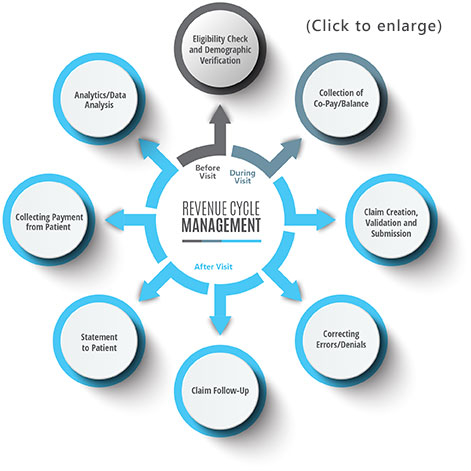Some businesses don’t realize how much cash flow is available in their balance sheets. It’s important for providers to periodically review their organization’s revenue cycle for any inefficiencies or improvements that may be holding the company back from growing. You can eliminate manual data entry errors and reduce transaction times by automating processes. However simply cutting costs is not enough to build a successful practice. Creating a positive patient experience is also crucial for the long term financial success of any practice. Below is a brief overview of medical revenue cycle management along with some best practices for improving revenue cycle management in healthcare.

What is Revenue Cycle Management in Healthcare?
It’s difficult to define healthcare revenue cycle. There’s a lot of overlap between the revenue cycle management process, practice management, and medical billing; all of which involve managing the relationship between patient, payer and provider. Depending on your specialty or practice, the definition of healthcare revenue cycle management consists of systems and procedures built to reimburse doctors for time and resources spent on patient requests. The typical healthcare revenue cycle flowchart consists of the following steps:
- Clinical Operations- RIS, LIS, EHR/EMR, or any system used to manage the schedule, registration and demographic information of patients
- Medical Coding- translating procedures into CPT, ICD and HCPCS codes. Claim scrubbing, data validation, and submission
- Payer Contracting- reconciliation and remittance with the insurance company, payer or clearinghouse
- Patient Billing- payment posting, statements, billing methods, and collections
- Reporting- data mining, forecasting and practice analytics using financial and performance data
Best Practices for Improving Healthcare Revenue Cycle Management
Despite the challenges associated with revenue cycle automation, it’s important for billing offices, practices and hospitals to adopt smart and flexible billing methods. If done thoughtfully and utilizing the right technology partner, the benefits will quickly outweigh the cost of training and implementation.
- Build charge capture and verification into the revenue cycle. On average, hospitals lose around 1 percent of their potential net revenue due to missed charges and loss of productivity. Electronic claims processing takes 30 percent less time compared to manual processing. Today, charge capture and file transfers can be performed using automated timers and natural language processing with little to no manual intervention.
- Automate and collect patient financial responsibility upfront. The more information you can provide up front to help patients understand and manage costs, the fewer write-offs you’ll have to manage in the end. Administrative costs can increase if organizations use manual processes to check prior authorizations and eligibility. CAQH’s 2016 Index showed manual prior authorization can cost providers an average of $7.50 per transaction, while electronic prior authorization can cost as low as $1.89 per transaction.
- Streamline your office’s front-end and back-end responsibilities. There's a large grey area between clinical modalities and revenue cycle operations. It is in this space where payments get lost in translation. This disconnect between front-end and back office systems and the resulting manual data entry is an invitation for errors. Electronic eligibility (or e-eligibility) along with fully integrated clearinghouse promotes more transparency into the status of a claim while minimizing denials.
- Use data to benchmark and forecast medical revenue cycle performance. Keep your finger of the pulse of your practice’s financial health AND staff performance. Each step in the revenue cycle should have its own set of KPIs. Setting KPIs and tracking over time will unveil bright spots in your revenue cycle and show you how to manage resources better.
- Treat billing and payment as one unified system. Today's technologies provide a tremendous opportunity to merge billing and payment into a single, cost-saving process. Since many customers already perceive billing and payment as one thing, the technology should be set up to reinforce that. When connected, billing managers can recognize patient payments faster, while a paperless billing process can deliver a better patient experience.
Sometimes realizing additional revenue takes more than new processes. So where to begin? Start by identifying two or three inefficiencies or challenges preventing your company from growing, either through a loss in revenue or patient satisfaction. Then identify opportunities and technologies that can improve operational efficiency as well as the ability for patients to understand and pay their bill. Consider the above revenue cycle management healthcare best practices and you will be well on your way to building a stronger business case for improving your revenue cycle performance.


